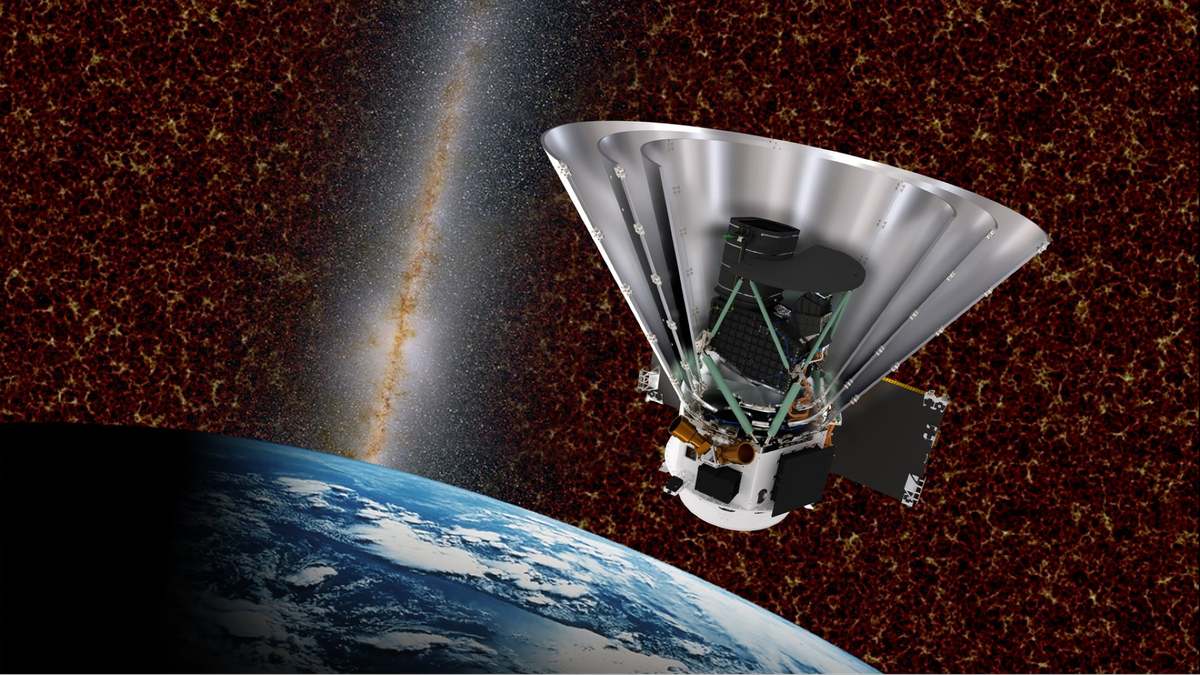Blog Credit : Trupti Thakur
Image Courtesy : Google
NASA’s SPHEREx
NASA’s SPHEREx Telescope is set to launch on February 27, 2025. This mission aims to create the most detailed and colourful map of the universe ever. It will explore cosmic history and the potential for life beyond Earth. The telescope will operate for two years, gathering data about galaxies, stars, and life-forming molecules.
SPHEREx (Spectro-Photometer for the History of the Universe, Epoch of Reionization, and Ices Explorer) is a near-infrared space observatory that will perform an all-sky survey to measure the near-infrared spectra of approximately 450 million galaxies. In February 2019, SPHEREx was selected by NASA for its next Medium-Class Explorers mission, beating out two competing mission concepts: Arcus and FINESSE. SPHEREx is scheduled to launch on 27 February 2025 on a Falcon 9 Block 5 rocket alongside the PUNCH microsatellites from Vandenberg Space Force Base. The principal investigator is James Bock at California Institute of Technology (Caltech) in Pasadena, California.
SPHEREx Overview
SPHEREx stands for Spectro-Photometer for the History of the Universe, Epoch of Reionization and Ices Explorer. Unlike traditional telescopes, SPHEREx will divide light into 96 bands. This allows for a comprehensive analysis of cosmic objects. It will cover the entire sky, unlike the more focused observations of the James Webb and Hubble telescopes.
Mission
SPHEREx will use a spectrophotometer to perform an all-sky survey that will measure near-infrared spectra from 0.75 to 5.0 micrometers. It will employ a single instrument with a single observing mode and no moving parts to map the entire sky (in 96 different color bands, far exceeding the color resolution of previous all-sky maps) four times during its nominal 25-month mission; the crucial technology is a linear variable filter, as demonstrated by LEISA on New Horizons.
It will classify galaxies according to redshift accuracy, categorizing approximately 450 million galaxies and fitting measured spectra to a library of galaxy templates. Specifically, SPHEREx will probe signals from the intra-halo light and from the epoch of reionization. It would explore what drove the early universe inflation, explore the origin and history of galaxies, and explore the origin of water in planetary systems.
SPHEREx will complement the Euclid and planned Nancy Grace Roman Space Telescope spectroscopic surveys. High precision redshift information of foreground galaxies provided by SPHEREx in correspondence with weak gravitational lensing measurements of background galaxies from Euclid and Nancy Grace Roman Space Telescope will allow for a direct measurement of the dark matter distribution surrounding the foreground galaxies. The SPHEREx low redshift survey allows its measurement of inflationary parameters to be mostly independent, thus providing a new line of evidence.
Cosmic Inflation Research
One primary goal of SPHEREx is to study cosmic inflation. This phenomenon refers to the rapid expansion of the universe after the Big Bang. Understanding inflation is crucial as it provides vital information about the universe’s evolution. SPHEREx will map a billion galaxies to help test various theories of inflation.
Identifying Life-Bearing Molecules
SPHEREx will also focus on locating water and biogenic molecules in our galaxy, the Milky Way. These molecules are essential for life. They exist in icy particles in the cold regions of the galaxy. By mapping these regions, SPHEREx will help identify where conditions may support life.
Complementary Missions
SPHEREx will work alongside other space telescopes like the James Webb Space Telescope. While James Webb focuses on high-resolution images of specific areas, SPHEREx will provide a broader view of the cosmos. This complementary approach enhances our understanding of the universe.
Data Collection and Impact
Throughout its mission, SPHEREx will capture around 8 million new spectroscopic images. This data will revolutionise our comprehension of the universe and the potential for life. By identifying promising regions for life, SPHEREx will contribute to astrobiology.
Future Implications
The findings from SPHEREx could reshape our understanding of cosmic history and the origins of life. The data collected will enable astronomers to identify patterns and anomalies. This will lead to new vital information about the conditions necessary for life in space.
About the Spacecraft/telescope
The triple mirror telescope will have an aperture diameter of 20 centimeters with a 3.5° x 11° field of view and six 2k x 2k mercury cadmium telluride (HgCdTe) photodetector arrays. Each 2K x 2K focal plane array is covered with a linear variable filter, providing narrow-band response with a band center that varies along one axis of the array. SPHEREx obtains spectra through multiple exposures, placing a given source at multiple positions in the field of view, where it is measured at multiple wavelengths by repointing the spacecraft.
The SPHEREx spacecraft and telescope will be provided by Ball Aerospace & Technologies while the payload is being developed by Caltech and NASA’s Jet Propulsion Laboratory. The Korea Astronomy and Space Science Institute will supply additional support in the way of a non-flight cryogenic test chamber.
Blog By : Trupti Thakur

27
FebNASA’s SPHEREx
Feb 27, 2025Recent Blog
The TechKritiApr 26, 2025
India’s First Quantum Computing VillageApr 24, 2025
India’s Achievement In QKDApr 22, 2025
The V2G TechnologyApr 21, 2025
Country’s Specific Domain By GoogleApr 19, 2025




